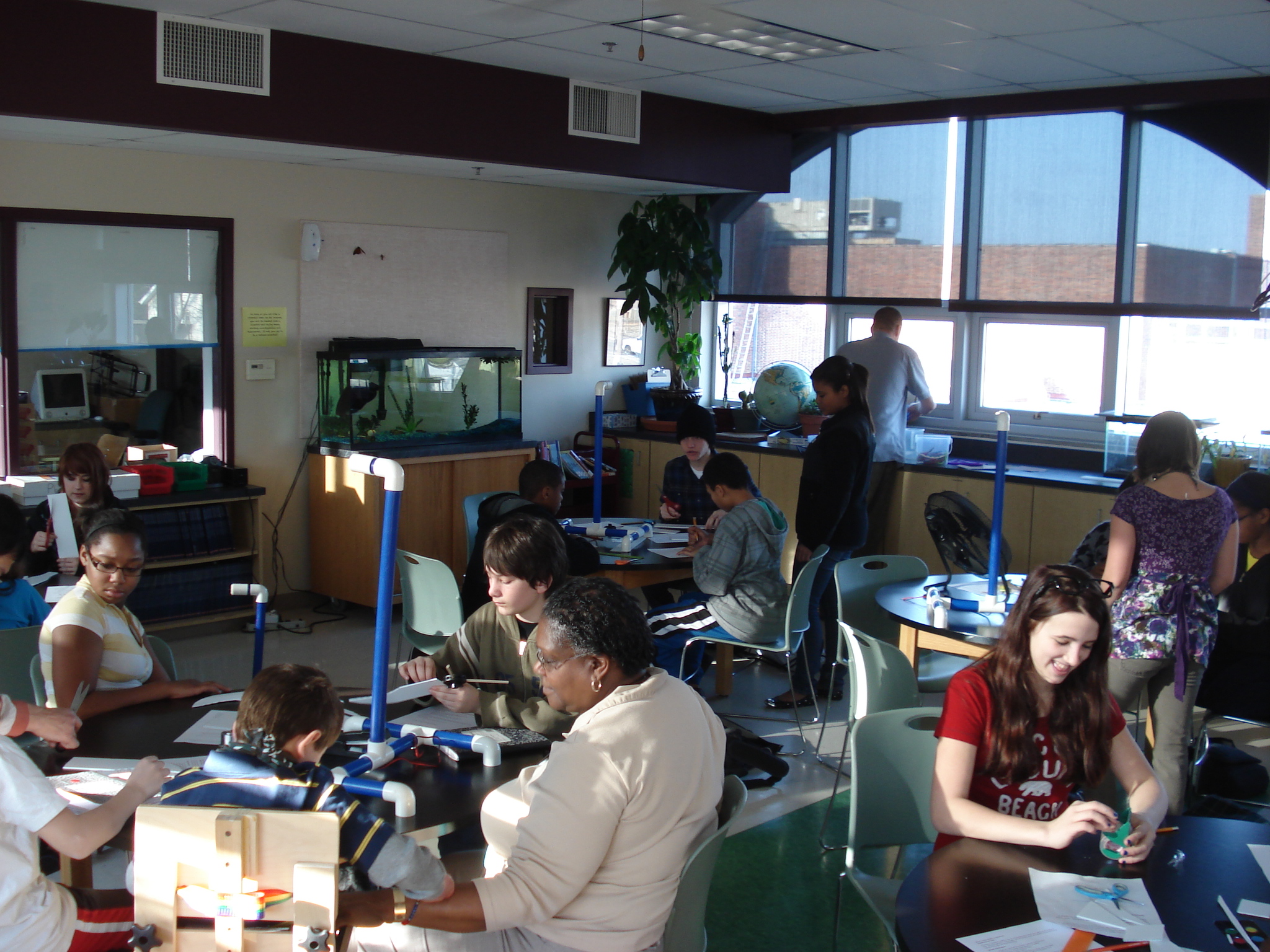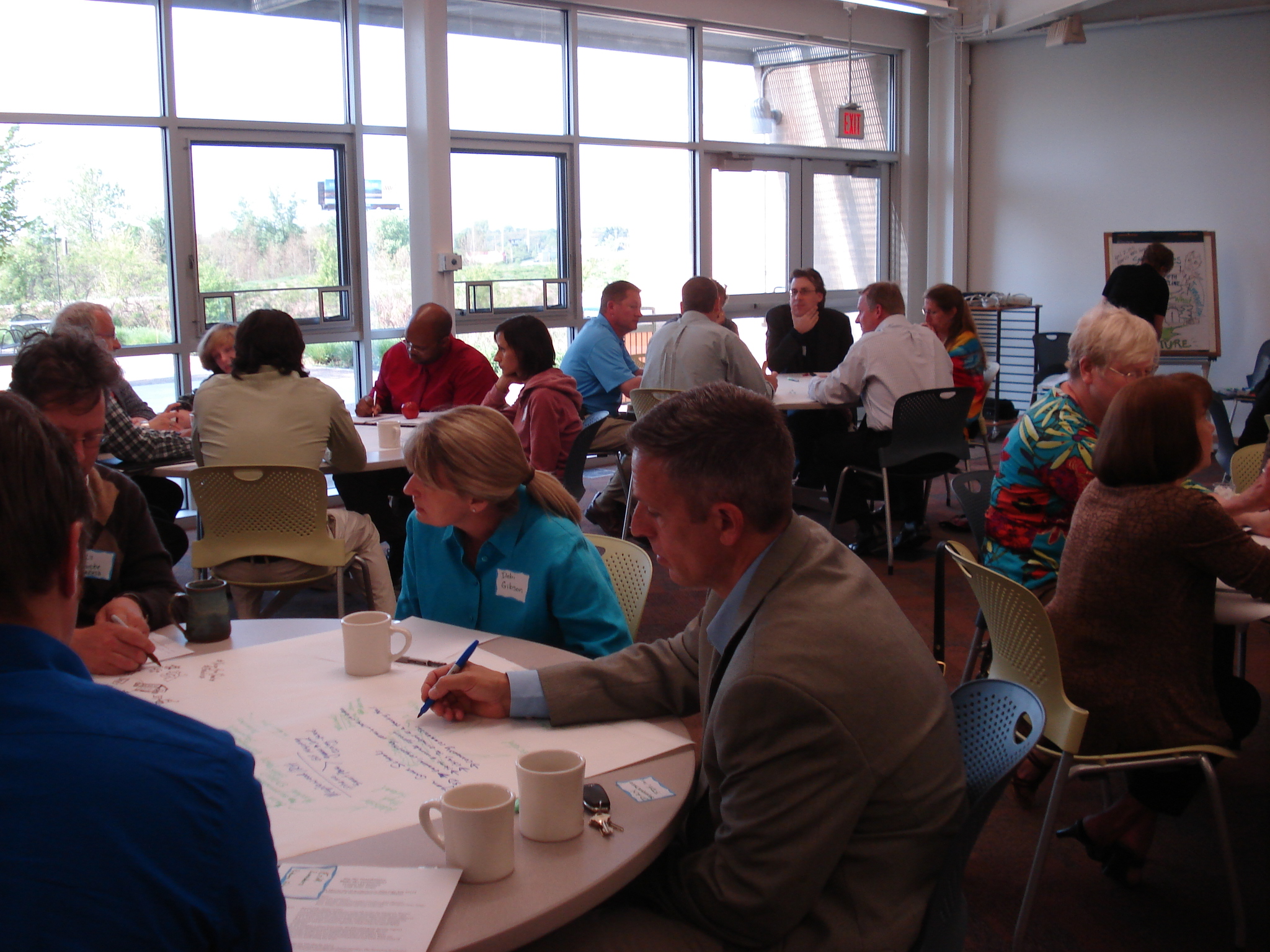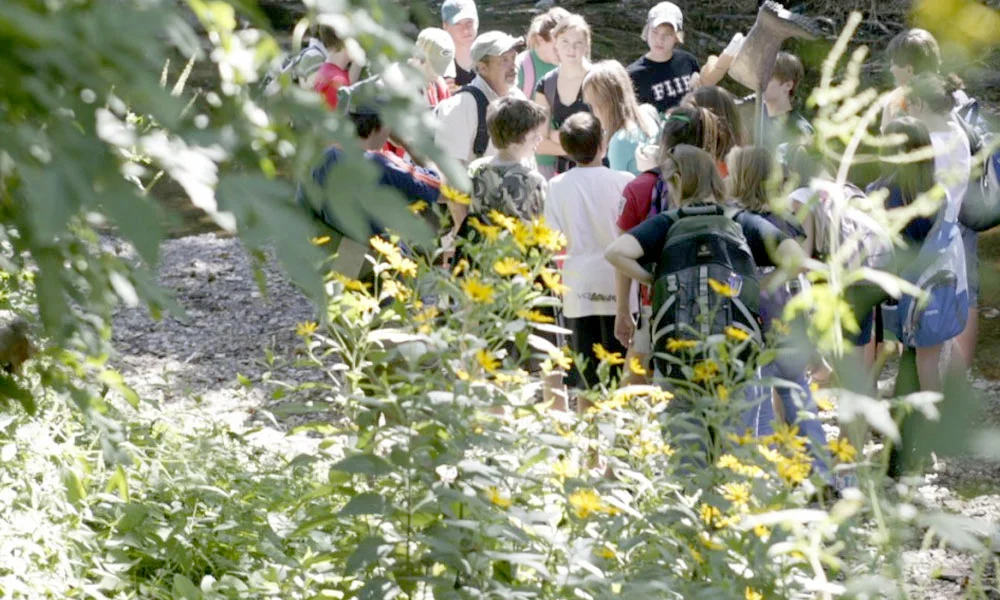
BLOG ARCHIVES
The Latest Brain Research: How People Learn
 Another myth that we aim to bust at our Myth Busters Seminar on April 19th and 20th in St. Louis is this one:
Another myth that we aim to bust at our Myth Busters Seminar on April 19th and 20th in St. Louis is this one:
Teachers deliver curriculum and students receive it. If this sounds like handing off information, filling empty vessels, and the industrial model of school as a factory, it is.
I’ve been reading Howard Gardner’s essay in The Wonder of Learning catalogue from Reggio Emilia. He writes, the idea that knowledge is transmitted from older, bigger, smarter people is a default assumption all over the world; it’s a naïve, folk theory of the world. He adds that this theory makes schools more easily controlled, even if ineffective.
Gardner writes that the constructivist theory of learning, even now, as it is confirmed by brain research, is still radical. If this is true, we suspect that most of you who are attending our conference or reading this blog, are radicals!
Among the many resources and researchers on this subject, I found Sugata Mitra's talk on Child Driven Education on TED thought provoking. He sees the learning process as a self organizing system with emergent properties. He uses the language of systems thinking, the sciences and social sciences to describe how we learn. Also, if you have not yet watched Sir Ted Robinson's talk, Bring on the Learning Revolution, please do. Creativity expert Sir Ken Robinson challenges the way we're educating our children. He champions a radical rethink of our school systems, to cultivate creativity and acknowledge multiple types of intelligence.
Gardner predicts that this naive folk theory of learning is on its way out and will soon become old fashioned and anachronistic. If you want to join in the learning with schools where this old view is long gone, come visit us.
If you come to The College School or Maplewood Richmond Heights School District, you will see teachers and students working together to share their learning, explore new territory and new ideas and become fervent learners along the way. If you come to the conference in April, you will join in this kind of learning with us and it will be fun! Registration is still open. For information and to register, email ashley@cadwellcollaborative.com.
Authentic Youth Engagement: Students Are Citizens Now
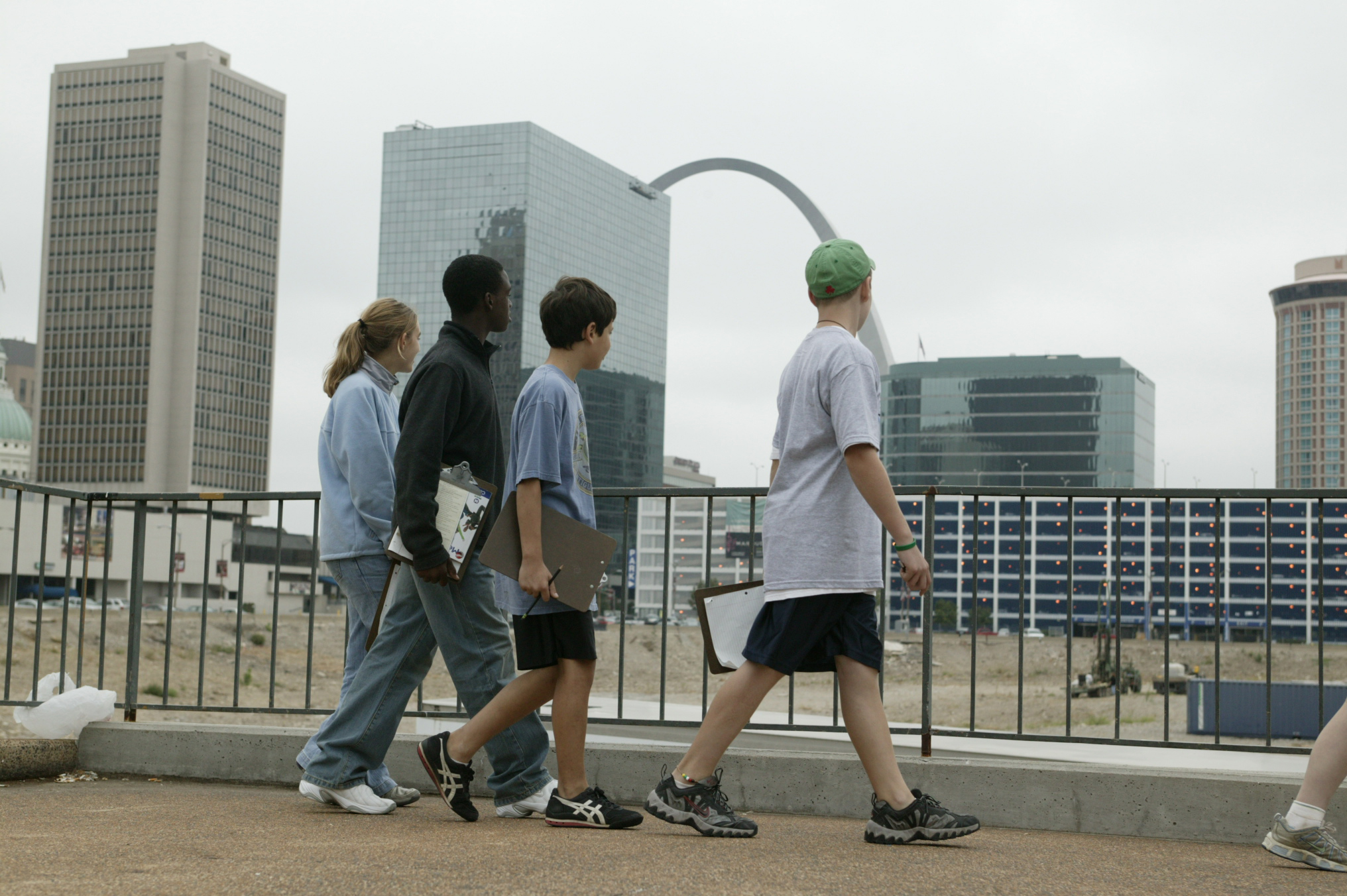 Last week’s blog explored the educational myth that students don’t do real work in school. I recounted the story of Annalise and The College School’s wind turbine, a powerful example of authentic youth engagement.
Last week’s blog explored the educational myth that students don’t do real work in school. I recounted the story of Annalise and The College School’s wind turbine, a powerful example of authentic youth engagement.
The myth, of course, is that students are not capable of making meaningful contributions to society. The sad truth is that many schools are organized in ways that are purposefully meant to limit students’ innate capacity for action and involvement in real issues. Schools that unleash the true potential of students to be active citizens equip and experience students as leaders.
In a speech to a group of 200 gathered at Shelburne Farms, Vermont on July 17th of 2008, Peter Senge put it this way:
School is the most influential institution in modern society. There are many ways to design an organization that promotes learning and the present industrial model of schooling is not one of them. There are some exciting counter examples, but they have not spread. The community, cultural institutions and business have to be involved. We need a broader base of change. In the eyes of a child, the future is alive. Maybe children need to step forward as leaders.
Students are fully capable of exploring the questions essential to citizenship. Developmentally, in an empowering way, students' innocence and lack of cynicism lead them to inquire and act with their hearts as well as their minds. They are not only citizens...they can be model citizens.
Terry Tempest Williams speaks eloquently on this in her book, The Open Space of Democracy. She writes:
The human heart is the first home of democracy. It is where we embrace our questions. Can we be equitable? Can we be generous? Can we listen with our whole beings, not just our minds and offer out attention rather than our opinions? And do we have enough resolve in our hearts to act courageously, relentlessly, without ever giving up--ever--trusting our fellow citizens to join with us in our determined pursuit of a living democracy?
To see and listen to students in action as citizens making vital contributions, we invite you to St. Louis on April 19 & 20, for our Myth Busters Seminar.
For more information on the seminar email Ashley <ashley@cadwellcollaborative.com>
A Myth to Bust: Students Don't Do Real Work in School
A common myth about education is that students can't or shouldn't do real work in school. Let me tell you a short story and then quote a real student as she reflects on her experience.
In 2008, Matt Diller, a third grade teacher at The College School, became interested in renewable energy. He shared some of his research with a group of sixth graders. The students became more than interested. They were determined to act. Over the next several months, they researched wind turbines, sourced a plausible turbine for installation at the school, advocated for its construction before the school board and then the municipal authorities, assisted in raising the funds for the project, and, finally, realized the construction of a vertical axis, Windspire turbine at their school.
A year later, one of the then seventh graders, (now a sophomore in high school), reflected on the students' experience and presented her thoughts to a group of over 200 adults representing both public and independent schools and programs gathered in St. Louis for a conference on Sustainability Education. The title of the conference: The Necessary Revolution from the book by the same title, by Peter Senge, who was the keynote speaker.
Here is the end of Annalise’s 5 minute speech:
Let me ask you a question: How many of you have stood before a roomful of people around my age and said something like this to them: You are our country’s future...You are the future of this world.
Well, I have heard this phrase countless times. Here, today, at this conference, I come before you to say that I disagree with statements like this. I am not the future of this country. We are not the future of this world. The time for my generation to step forward and lead is not in the future....because I don’t believe that this world can wait for me or my generation to grow up. With problems like global warming facing us, I am convinced that my time to dream, that my time to act, that my time to create a new, sustainable world is not in the future...it’s right now.
In order for us to even have a future we have to be willing to listen to our experiences, to dream together, and to support one another’s visions; whether that dream or vision comes from a business owner, the founder of a school, a third grade teacher, or from a group of hard working seventh grade students who can see that the future is now.
I understand that global warming is a dire issue. It is projects like these that help us take steps toward a more sustainable world.
On behalf of those seventh graders, on behalf of my generation, thank you for creating a space for us to join in this urgent conversation.
Every time I listen to Annalise’s speech I get a catch in my throat. To so many of us the issues of sustainability are incomprehensible, overwhelming, and/or hopeless. It is compelling to hear a 13 year articulate her vision and action so clearly and with such conviction.
Since the wind turbine, many more projects have been initiated and developed by the students at both The College School and just down the street at Maplewood Richmond Heights School District. At our Myth Busters Seminar, on April 19th and 20th, participants will witness engaged, high achieving students in action, learning and working toward a healthy, hopeful future. Please join us in this vital conversation.
For more information and to register, email Ashley Cadwell.
Vital Collaboration for the Future: Independent and Public Schools
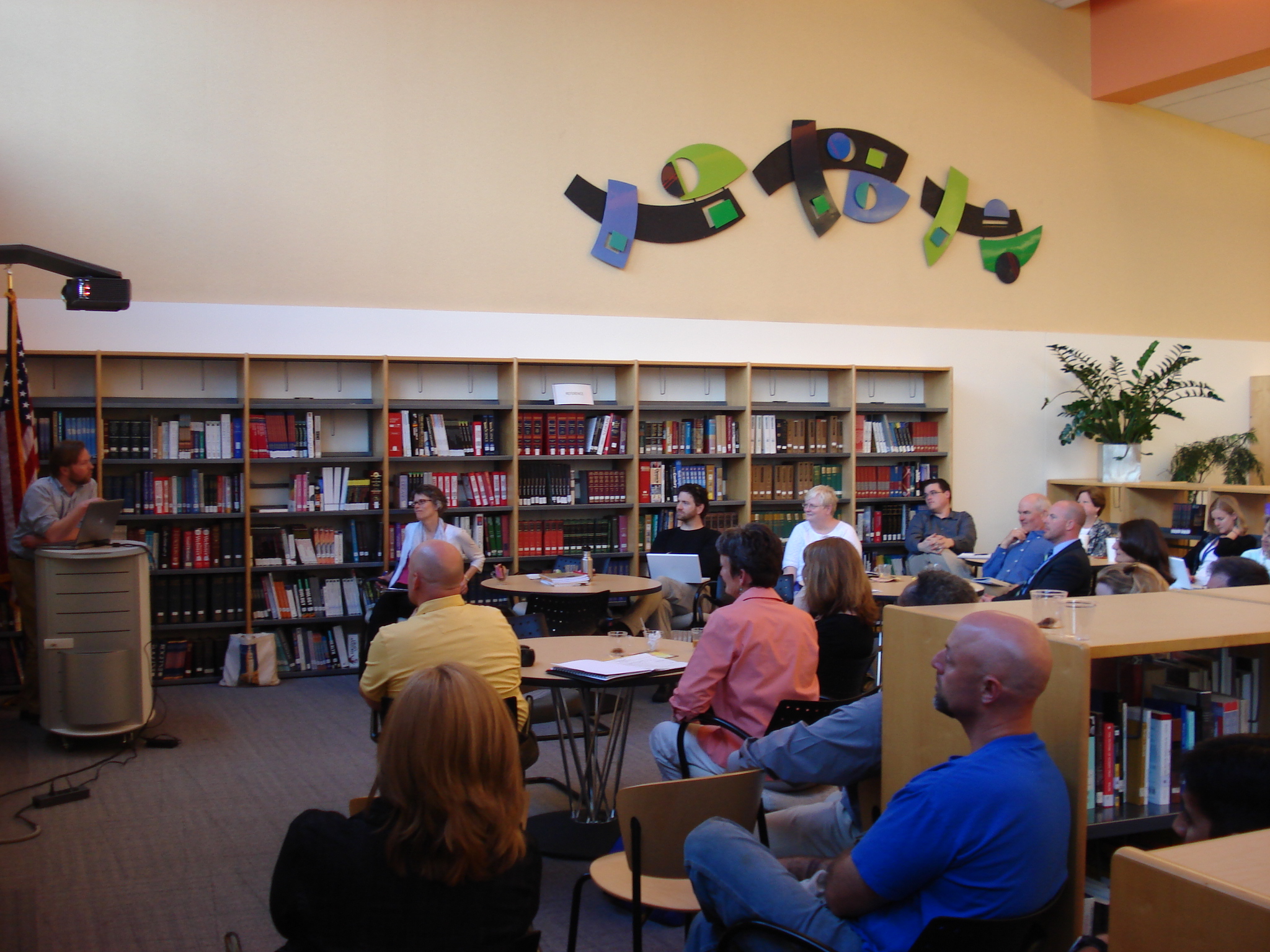 I’m sitting at a conference table with eight colleagues. We’re planning a second annual professional development seminar for this April 19 & 20, 2012. We’re talking about projects that are going on at each school that have to do with WATER.
Bob Dillon, MRH Middle School Principal, pipes up,
Well, we should have our aquaponics project going by spring.
Your WHAT? asked Tim Wood, TCS Sustainability Coordinator.
At the end of Bob’s explanation, Tim turned to Sheila Gurley, Head of TCS,
Well, Sheila, looks like we need a fish production center, too.
She nods in hearty agreement.
I’m sitting at a conference table with eight colleagues. We’re planning a second annual professional development seminar for this April 19 & 20, 2012. We’re talking about projects that are going on at each school that have to do with WATER.
Bob Dillon, MRH Middle School Principal, pipes up,
Well, we should have our aquaponics project going by spring.
Your WHAT? asked Tim Wood, TCS Sustainability Coordinator.
At the end of Bob’s explanation, Tim turned to Sheila Gurley, Head of TCS,
Well, Sheila, looks like we need a fish production center, too.
She nods in hearty agreement.
Oh, BTW...MRH is Maplewood Richmond Heights School District and TCS is The College School in Webster Groves. MRH is public, somewhere in the 60-70% free and reduced hot lunch demographic. TCS is an independent school, somewhere in the 5% free and reduced demographic.
These folks are at the same table. They’re sharing ideas. They know they have much to learn from each other.
One of the great myths in the field of education is that independent and public schools do not collaborate. I imagine that many of us think that public schools are inferior to independent schools. Most of us think even think that if independent schools seek to interact with public schools that they are in competition with each other; that they’re trying to BEAT each other.
Most of us don’t consider the actual root of the word competition: from Greek, com petre; petre: to strive; com: together; to strive together to get better.
Here in St. Louis, over the past twenty years, Louise and I have experienced this original, interdependent, co-constructive meaning. We have been a part of an ongoing history where independent and public schools collaborate to create dynamic professional development opportunities, both for themselves and for educators coming here from all over the country (and Canada, Australia, Korea, Japan, and Sweden).
In fact, the reason Louise and I came to St. Louis from Vermont (via Reggio Emilia, Italy) was because Louise was hired by Jan Phillips, Head of The College School at the time, to be their first ever "atelierista," and to work with Brenda Fyfe at Webster University to initiate a city wide educational investigation of The Reggio Approach in ten diverse school settings. It was Jan and Brenda’s vision from the beginning that a grant from the Danforth Foundation would support independent and public schools working together on this initiative.
After twenty years of growth and evolution, many new avenues have opened up for the schools involved. And, at the core remains the exciting element of collaboration between public and independent schools. A recent example was last April’s professional development seminar, We’re NOT Waiting for Superman, Learning for the Future in Action.
Current examples of public-independent collaboration will be featured this April 19 & 20, 2012 at our second annual seminar, Myth Busters: Challenge Assumptions and Learn for the Future, sponsored and led by the collaboration of MRH and TCS and Cadwell Collaborative. The educators and students in both schools will share their respective practices in the areas of systems thinking, expeditionary, theme-based learning, and design thinking; and their curricular projects that revolve around food, water and play-based learning.
The April seminar will be filled with these stories, practical knowledge and skills and joyful learning and collaboration among all of us. We invite you to join us!
For more information and registration forms just email Ashley. The seminar is limited to 75 educators.
Which comes first: 21st Century Curricula or 21st Century School Design?
Which comes first: 21st C. Curricula or 21st C. School Design? This question comes up when working with educators and my answer has been, It sounds like a chicken and egg proposition, doesn’t it; however, my sense is that it really doesn’t matter which comes first. 21st C. curricula and 21st C. school design are interdependent. They clearly influence each other. Also, one can cause the other. The tragedy is when neither exists and there is no catalytic reaction to cause either to develop. (BTW, I specialize in these particular catalytic reactions.)
On the curricular side of this conundrum there is the development from the 20th C. reductive preoccupation with instruction in Reading/Writing/Arithmetic to the 21st C. expansion to include development of new skills: technological literacy, critical thinking, problem solving, creativity, and innovation (to summarize the core skills).
On the school design side, to cite one of several patterns, is the development from the 20th C. simplistic repetition of double-loaded center corridors of uniform rooms...a monotony of form; to the 21st C. complex design of flexible, transparent spaces of varying sizes connected by hallways that are galleries...creating a “hologram of narration” (Children, Spaces, Relations, p. 24)
The interdependence of curricula and school design is obvious. The 20th C. instruction in the 3 R’s dictated uniform classrooms; and, visa versa, uniform classrooms structurally forced academic disciplines, even new ones, into silos. Similarly, the 21st. C. development of new skills has caused an integration of disciplines that have called for flexible classroom forms; and visa versa, patterns of flexibility and transparency in school design has supported innovation in curricular approaches.
In the next few blogs I will explore several more specific areas of the interdependence of curricula and school design.




